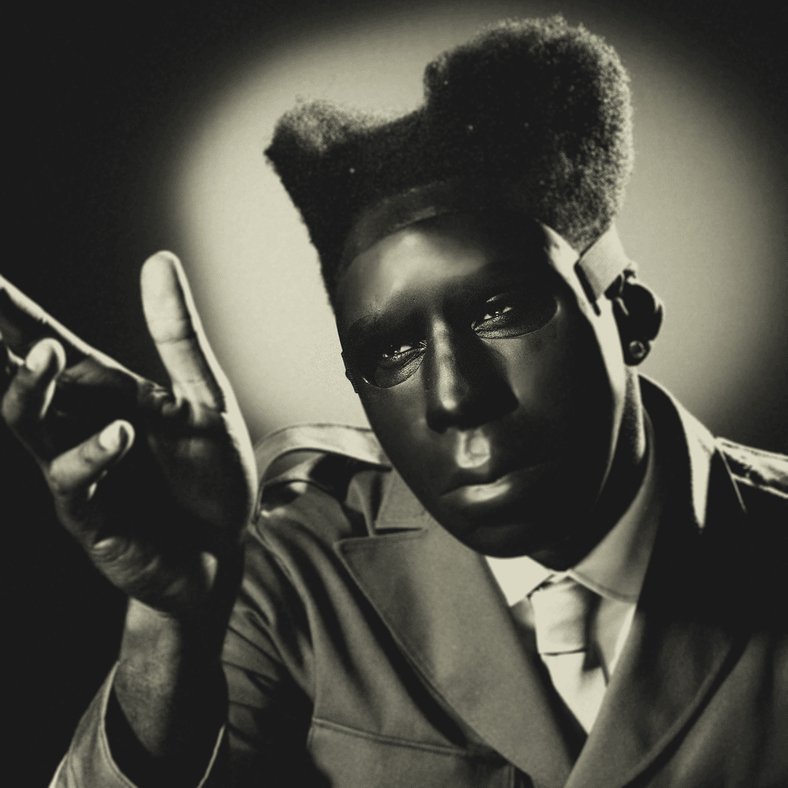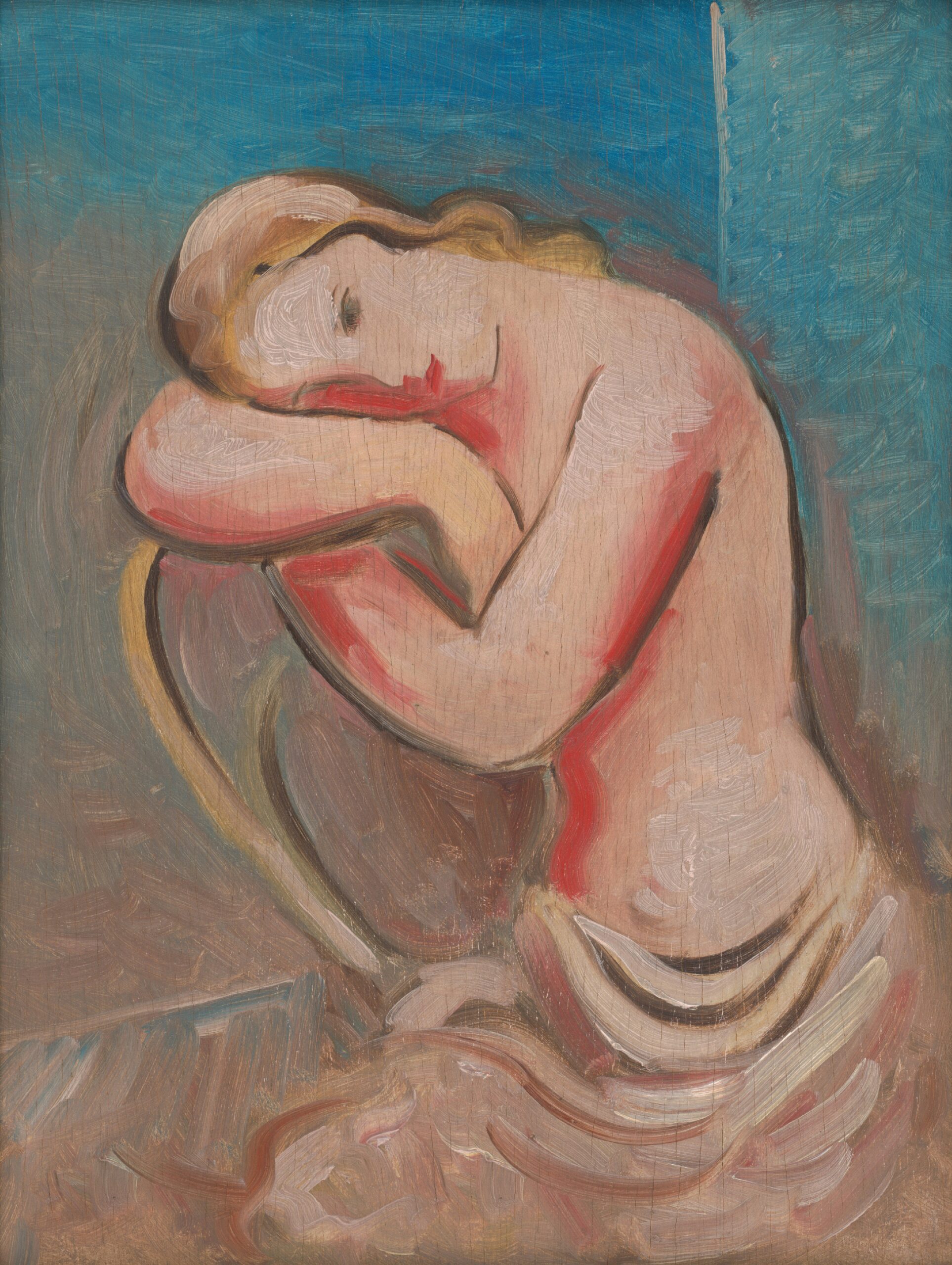
Tyler, The Creator’s seventh album Chromakopia has snuck up on us with an element of surprise, as the artist claimed to longing fans earlier this spring that 2024 would see none of his work. Like Tyler’s previous albums, its saturated creativity renders it the kind of album that takes listeners a long time to fully unpick. This began even before the release, as the initial promotional campaign that consisted of mysterious sepia videos of him clad in a mask and army uniform caused speculation of a new persona. Yet, as with his claims against new music, such theories were misdirected. Instead, Tyler has presented us with a more intimate album where he steers clear of hiding behind a character, revealing a more conceptually and lyrically intimate work. In this conversation between the former ego riddled version of himself and his current maturing form, he lets his mask slip.
Chromakopia is constructed upon a made-up word, making the album and the world it pulls us into, Tyler’s ‘creation’ from the outset. Considering ‘chroma’ means colour, and ‘kopia’ means abundance, colour is a central theme to the album. A conflicting part of Tyler’s identity that this album seeks to grapple with is the implications of his own colour. He explores this through songs such as Judge Judy, which discusses the political opinions of black hairstyles in America, as well as the use of a sample from 70’s Zamrock band Ngozi Family in NOID – one of the first songs to be released prior to the rest of the album. Tyler builds on the theme of colour in a different way too through a reference to Chroma the Great, a character from Norton Juster’s children’s book The Phantom Tollbooth. In Juster’s books, Chroma is an orchestra conductor whose music brings colour to the world. Thus, the video for the opening track of the album, St Chroma, is set in a monochrome world that is granted colour by the intense beat of this song. Displaying music in a way that is both central to his own identity, and the very reason our world hasn’t descended into darkness (yet), it is apparent how important his craft is to him, making for a personal tone absent from his other albums.
St Chroma sets the mood as an opening track, introducing the conceptual meaning behind the album through the repetition of vocals chorusing ‘Chromakopia’. Mirroring ‘Igor’’s theme in nature, it features this loop, which is delivered with an intense beat that keeps the pulse in the background. Both tracks build up towards a lull in the middle, but St Chroma differs by descending into a chaotically discordant electronic beat that resolves with an isolated vocal line. This energy is momentary as chaos ensues once again through the high energy of Rah Tah Tah. Daniel Caesar’s delicate vocals are disrupted by a pure rap track that repeats ‘I’m paranoid’ throughout – an introduction to a more emotive side that the rest of this album builds on. I think the conversation that he creates with Igor is important to mention, as it has been scrutinised as a lack of originality by critics that see Chromakopia as ‘more of the same’. By mimicking Igor, but doing so in a more vulnerable way, I think he creates a conversation between a previous ego riddled version of himself in 2018, and a maturing self-aware version of himself. Specifically, by sampling his mum’s voice notes, a quintessential part of ‘Igor’’s sound, he shows he is still the same guy who cosplayed the villain’s assistant, Igor, but is no longer protected by the anonymity his blonde wig granted him.
Just as the two albums remain in conversation, the tracks on ‘Chromakopia’ do too. They seamlessly blend into each other, and when I first listened to the album the whole way through, I was sometimes unaware when a new song had started. This is most obvious in the beginning of NOID, as Tyler’s synthesised use of the word ‘paranoid’ blends into the ending of Rah Tah Tah before. NOID also follows on narratively from the prior song, elaborating on the paranoia that Tyler faces in a theatrical way. He further explains this in Darling, I, which is seemingly a comedown from the theatrics of Noid, that explores his unfortunate relationship with women. He states that nothing fulfils him like music, a point that ultimately plays into the wider meaning of Chromakopia, and the idea that, for Tyler, music equates to light and is essential. The seamless transitions successfully create this uniform story, with each track playing into this wider image.
His vulnerability continues throughout Hey Jane, a conversation about an unexpected pregnancy that his girlfriend goes through. The empathetic side of Tyler continues to be displayed by his ability to rap from his perspective and her perspective, contrasting with the ego that he explains he was and still somewhat is still grappling with. I killed you and Judge Judy seem like filler songs to me, heightening the musical comeback that Sticky acts as. Each verse mirrors that of a cannon firing, a palpable chemistry that is arguably the climax point of this album.The feature heavy nature of this album shows Tyler venturing into a more collaborative and less self-centred stage of his career , adding a diversity to his album. It is also of note that despite this, he fails to produce a feature list. I suspect that this would detract from the introspection that he aims to convey.
Finally, from the high energy song of Sticky we witness a decline into raw emotion with Tomorrow and Like Him. The final track I Hope You Find Your Way Home seeks to provide some resolution for this, but ironically encapsulates the journey we have been brought on throughout. Tyler remains painfully self-critical; and seems to be ‘slipping’ and ‘slipping’ still in his thoughts despite this. The erratic melodies and intense beats coupled with lyrical vocals and differing features from established artists makes for a state of musical confusion that the final track embodies. An album that started with the author denying its existence has evidently manifested into a state of confusion, where nothing is as it seems. Posed as a wider insight into his inner monologue and perhaps his experience of fame, this album achieves that enchanting and exhausting effect.






